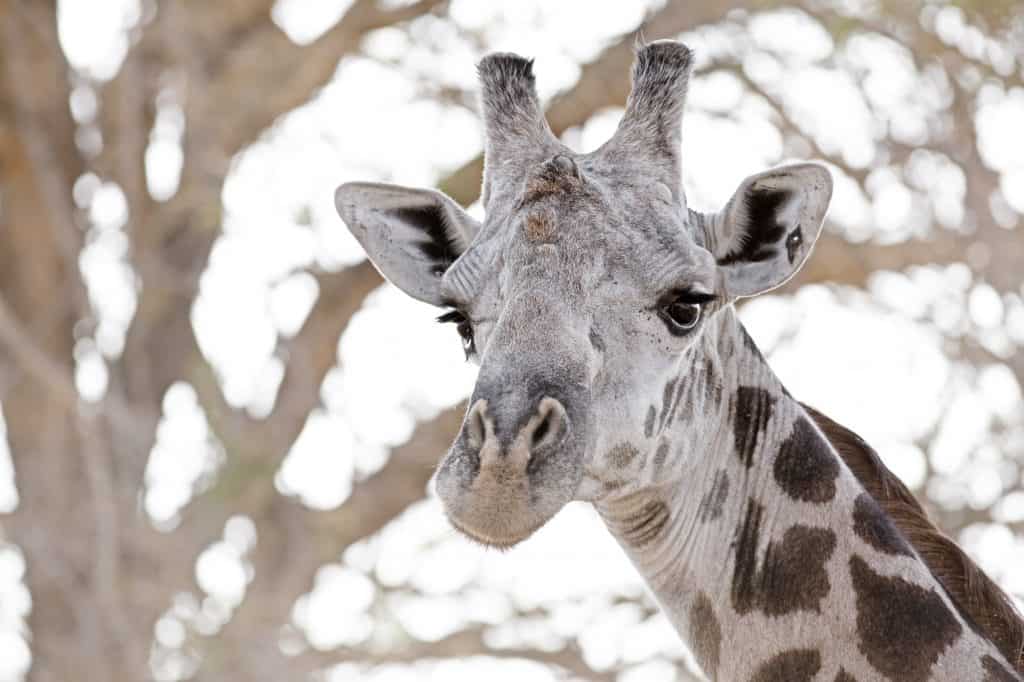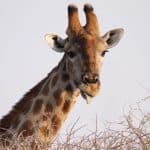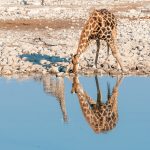Yes, Giraffes are born with their spots and no two giraffes have the same pattern.
What do you think of when you think of a giraffe? The two attributes that usually come to mind first are:
A long neck, and spots. It is easy to see why a giraffe has a long neck. After it is born, it stands up, reaches up for its mother, and begins to suckle. If the giraffe had a short, stubby neck, it wouldn’t be able to suckle right away. So, the question about why a giraffe needs a long neck is easily answered.
But what about its spots? Are spots just pretty markings? Does a giraffe really need them?
And how about one of the big questions—
How Do Giraffes Develop Their Spots?
Giraffes have spots as a result of a genetic trait, and these patterns develop even before birth. The exact reason why giraffes have spots is still a topic of research and speculation among scientists. Some theories suggest spots may help with camouflage, while others propose they play a role in regulating body temperature or attracting mates. Regardless of the purpose, the unique spots are one of the defining features of these majestic creatures.
Are Giraffes Born With Spots?
First, giraffes are born with spots.

Also, no two giraffes will have colorations that are exactly alike, even though at first, it might seem like giraffe spots look the same. However, like tiny snowflakes, or human fingerprints, they vary just enough to not be the same.
And if you are a giraffe, you will tend to inherit the basic design from your mother’s side.
Why Do Giraffes Have Spots?
Is there any reason for spots on a giraffe, or are they simply beautiful, kind of like how humans view a lush, full head of hair?
Well, there is no denying the beauty of the markings. Especially when a giraffe is running, with the sun shimmering and reflecting off different parts of the animal’s coat. The play of light and dark accentuates the giraffe’s natural grace. But a giraffe’s spots are actually much more important than merely a cosmetic beauty tool.
The reason most often given for spots are on giraffes
Camouflage
These are animals born needing to be protected and hidden from predators. Their spots help hide them. A mother can leave a baby in tall grass, and go foraging for food. The baby is, from birth, dressed in such a way that it is hard to spot it against a backdrop of leafy plants.
But the irregular splotches do more.
Where Do Giraffes Naturally Live
Giraffes tend to naturally live in a rather arid type of area, usually referred to as a Savannah. In these places, the weather is warm. The summer is the rainy season. So the temperature, year-round, doesn’t get cooler than 70 degrees F. and you might think the giraffes would be too warm. Ah, but they have a secret.
Giraffe’s Spots Keep Them Cool in the Heat
There are blood vessels running under and around the spots. When the weather is sultry, and warmth needs to be released, a giraffe can send blood through vessels under the spots. The spots then perform kind of like a dog’s panting does for a dog. Every spot on a giraffe acts like a thermal doorway. It reduces the heat radiation, bringing down the overall temperature of the giraffe.1
Do Giraffe’s Spots Turn Gray As They Age?
Okay, we now know that giraffes’ spots have very good reasons for being there. The spots provide protection from predators and allow for thermal relief.
We know that no two giraffes have markings exactly the same, and they are inherited from the mother’s side.
We have an answer to the big question of whether a giraffe is born with its spots—it is.
Do the spots stay the same color as a giraffe ages?

No, a giraffe’s spots do not stay the same color as the giraffe gets older. But they don’t turn grey, either. As a matter of fact, especially in the case of a male giraffe, the spots darken. By the time a male giraffe is around 9 and 1/2 years old, his markings will have deepened in shade until the giraffe’s spots are deep black.
So now, next time you go on a wildlife safari or watch wild animals on television, you can know which giraffes are the young ones, and which are the “grumpy old men”.
World Giraffe Day
Even if you keep seeing the grumpy old men, though, you can help them cheer up by wishing them “Happy World Giraffe Day” on June 21. Newly instituted in 2020, it is one thing that happened in 2020 that was a good thing2, so it might as well be enjoyed with this majestic species, listed as “vulnerable3“.
1https://giraffeconservation.org/facts/
2https://giraffeconservation.org/2020/05/08/
3https://www.sheldrickwildlifetrust.org/about/species








